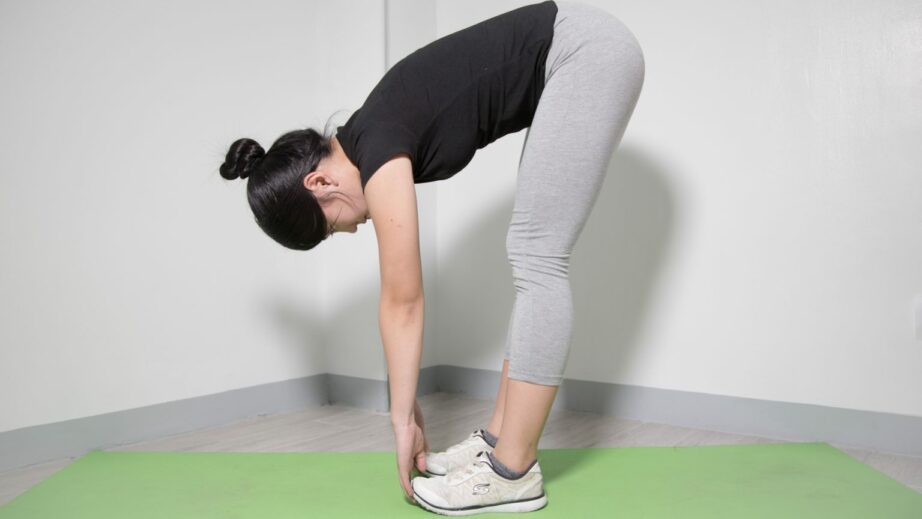Touching your toes may seem like a simple task, but for many people, it can be a challenging feat that requires flexibility, mobility, and proper technique. Whether you’re a seasoned athlete or a fitness novice, improving your toe-touching ability can enhance your overall flexibility, reduce the risk of injury, and contribute to better athletic performance. In this comprehensive guide, we’ll explore the benefits of toe-touching, techniques to improve flexibility, common mistakes to avoid, and frequently asked questions to help you master this fundamental fitness skill.
Benefits of Toe-Touching
Improving your ability to touch your toes offers numerous benefits for overall health and fitness, including:
Techniques to Improve Toe-Touching
Dynamic Warm-up
Begin your toe-touching routine with a dynamic warm-up to increase blood flow to the muscles and prepare them for stretching. Include movements such as leg swings, hip circles, and walking lunges to loosen up the lower body.
Standing Forward Fold
Stand with your feet hip-width apart and slowly hinge forward at the hips, reaching your hands towards the floor. Bend your knees slightly if needed to maintain a flat back. Hold the stretch for 20-30 seconds, breathing deeply, then slowly return to the starting position.
Seated Forward Fold
Sit on the floor with your legs extended in front of you. Slowly reach forward, sliding your hands down your legs towards your feet. Keep your back straight and avoid rounding your spine. Hold the stretch for 20-30 seconds, then release and repeat.
Half Forward Fold
Begin in a standing position with one foot forward and the other foot back in a lunge position. Keep the back leg straight and hinge forward from the hips, reaching your hands towards the front foot. Hold for 20-30 seconds, then switch legs and repeat on the other side.
Downward Dog Stretch
Start in a plank position with your hands shoulder-width apart and your feet hip-width apart. Lift your hips towards the ceiling, straightening your arms and legs to form an inverted V shape. Press your heels towards the floor and hold the stretch for 20-30 seconds, focusing on lengthening the spine and hamstrings.
Pike Stretch
Sit on the floor with your legs extended in front of you and your feet flexed. Reach your arms overhead and slowly fold forward, aiming to bring your chest towards your thighs and your hands towards your feet. Hold the stretch for 20-30 seconds, then release.
Common Mistakes to Avoid
Rounding the Back
Avoid rounding your spine when reaching for your toes, as this can increase the risk of injury and reduce the effectiveness of the stretch. Focus on keeping your back flat and your chest open throughout the movement.
Forcing the Stretch
Never force yourself into a toe-touching position if you feel pain or discomfort. Stretching should be gentle and controlled, with a focus on gradual progress over time.
Neglecting Other Muscles
While toe-touching primarily stretches the hamstrings and lower back, it’s essential to incorporate stretches for other muscles that contribute to flexibility, such as the calves, hips, and glutes.
Skipping Warm-up
Failing to properly warm up before stretching can increase the risk of injury and limit the effectiveness of your toe-touching routine. Always include a dynamic warm-up to prepare your muscles for stretching.
Overlooking Breathing
Remember to breathe deeply and evenly throughout each stretch, as deep breathing can help relax the muscles and deepen the stretch.
Expecting Instant Results
Flexibility takes time to develop, so be patient and consistent with your toe-touching practice. Aim for gradual progress and celebrate small improvements along the way.
Frequently Asked Questions (FAQs)
How often should I practice toe-touching exercises?
Aim to incorporate toe-touching exercises into your regular stretching routine at least 3-4 times per week for optimal results.
I can’t touch my toes. Where should I start?
Start with gentle stretching exercises targeting the hamstrings, lower back, and calves. Gradually increase the intensity and duration of your stretches as your flexibility improves.
Should I stretch before or after exercise?
Both! Stretching before exercise can help improve flexibility and reduce the risk of injury, while stretching after exercise can aid in muscle recovery and improve flexibility over time.
How long should I hold each stretch?
Aim to hold each stretch for 20-30 seconds, breathing deeply and focusing on relaxing the muscles. Repeat each stretch 2-3 times on each side.
Can I use props like yoga blocks to assist with toe-touching stretches?
Yes, props such as yoga blocks or straps can be helpful for modifying stretches and providing support as you work towards touching your toes.
What if I feel pain while stretching?
If you experience pain while stretching, ease off the stretch immediately and reassess your technique. Stretching should never cause sharp or intense pain. If pain persists, consult a healthcare professional for guidance.
Will improving my toe-touching ability help with other exercises?
Yes, improved flexibility in the hamstrings and lower back can enhance performance in various exercises, including squats, deadlifts, lunges, and running.
Conclusion
Mastering the ability to touch your toes requires patience, consistency, and proper technique. By incorporating toe-touching exercises into your regular fitness routine and focusing on gradual progress, you can improve flexibility, reduce the risk of injury, and enhance overall athletic performance. Remember to listen to your body, avoid forcing stretches, and consult with a fitness professional or healthcare provider if you have any concerns or specific mobility issues. With dedication and persistence, you can achieve greater flexibility and mobility, allowing you to move more freely and confidently in your daily life and fitness pursuits.
- Traptox Aka Trapezius Botox Treatment Near Busbridge, Surrey - January 7, 2025
- Will Lip Filler Hide Smokers Lines? - December 23, 2024
- Boyfriend Won’t Go Down On You? Here’s What To Do - December 23, 2024


